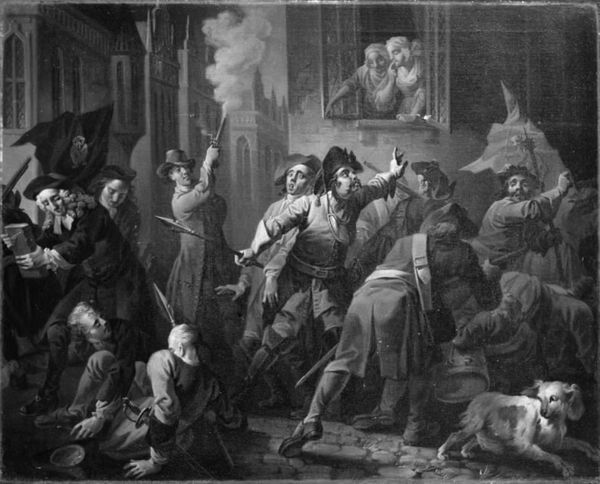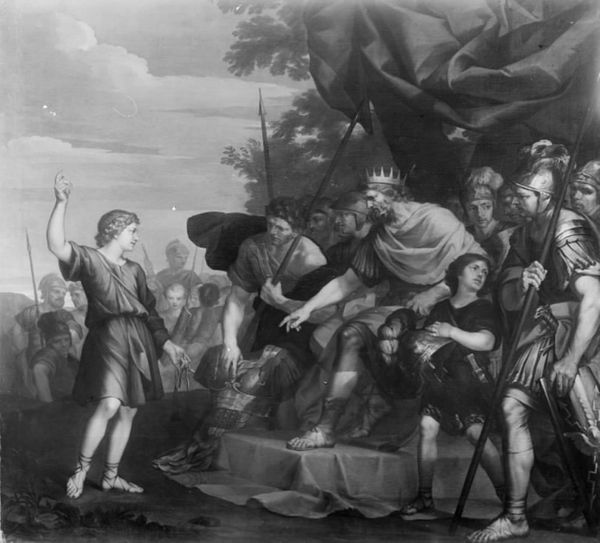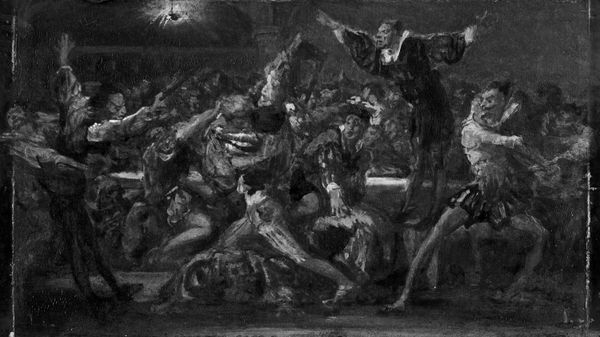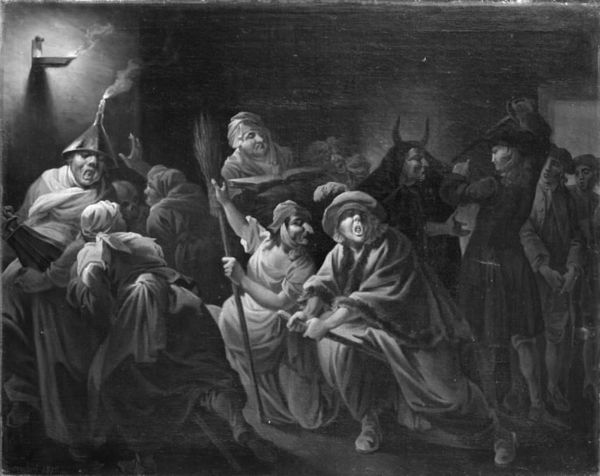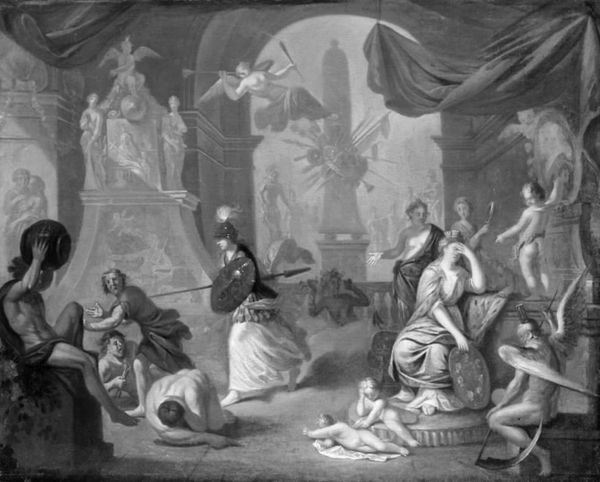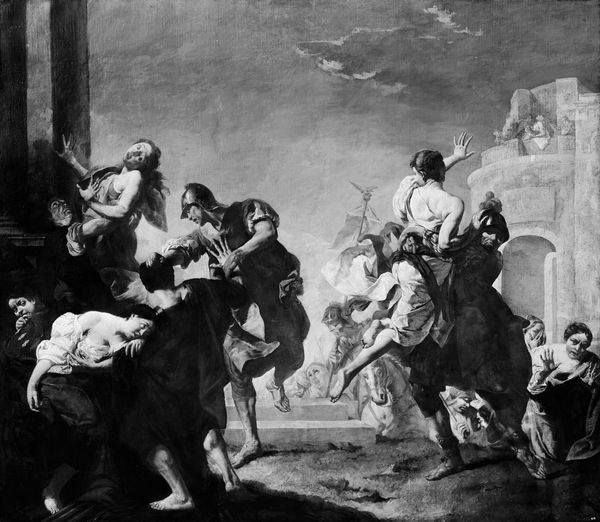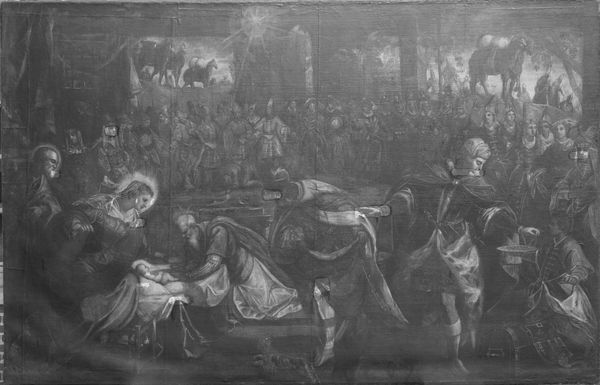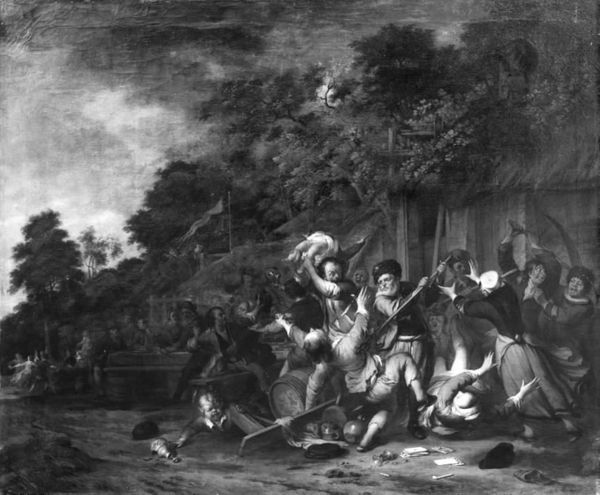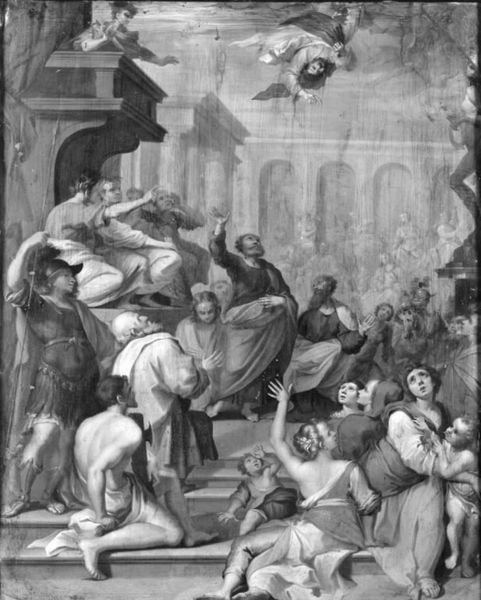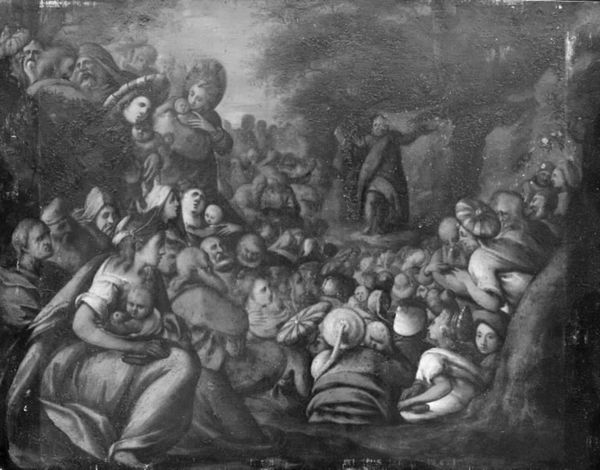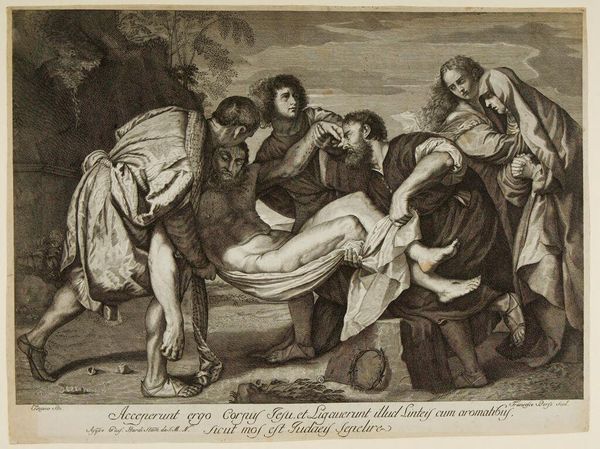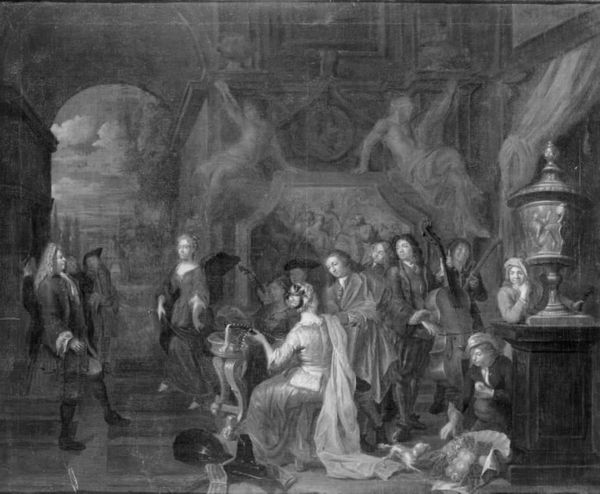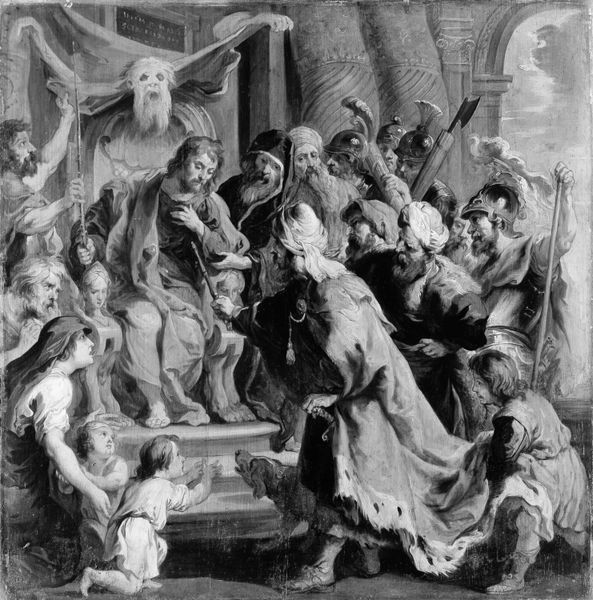
Sancho Panza Being Tossed in a Blanket 1723 - 1724
0:00
0:00
painting, oil-paint
#
narrative-art
#
baroque
#
painting
#
oil-paint
#
figuration
#
black and white
#
genre-painting
#
charcoal
Dimensions: 11 3/8 × 14 1/2 in. (28.9 × 36.8 cm)
Copyright: Public Domain
Curator: Welcome. Here we have Pierre Charles Trémolières’ "Sancho Panza Being Tossed in a Blanket," painted between 1723 and 1724. It’s an oil painting, currently residing at the Art Institute of Chicago. Editor: It immediately strikes me as theatrical. A chaotic scene unfolding, figures reacting, the man suspended in air… the entire composition feels geared toward eliciting a reaction from us as viewers. What's the context? Curator: Trémolières drew inspiration from Cervantes’ *Don Quixote*. This moment captures the episode where Sancho Panza, Don Quixote's squire, is victim of a prank: tossed in a blanket by mischievous characters at an inn. *Don Quixote* was, by the 18th century, deeply ingrained in the cultural imagination. This sort of literary reference would have had significant cultural currency. Editor: The performative cruelty is interesting; the glee of the crowd versus the vulnerability of Sancho. Is the work commenting on class dynamics, do you think? Who has the power to turn another into a spectacle, and who is left exposed? Curator: Undoubtedly, social hierarchy is central. *Don Quixote* itself, as a work, satirizes societal norms. Trémolières presents us with a scene of disorder, playing on established power structures, or lack thereof. What I think it succeeds at doing is turning the mundane into something grand and absurd. Editor: Absolutely, the almost farcical exaggeration invites the viewer to question the implications of the situation. Considering performance theory, there are so many questions to unpack regarding selfhood, pretense and control when reading an image like this! Curator: One can read the image from many angles, which makes it interesting, right? In 18th-century France, scenes like this one offered a visual vocabulary to discuss social order and critique institutions, which is likely why they remained so popular. Editor: Thank you! It's fascinating how a moment of fictional cruelty can open such an extensive dialogue on real-world dynamics. Curator: Exactly, and that dialogue is something museums are here to facilitate, providing a lens for the public to view both art and the wider world through varied lenses.
Comments
No comments
Be the first to comment and join the conversation on the ultimate creative platform.
